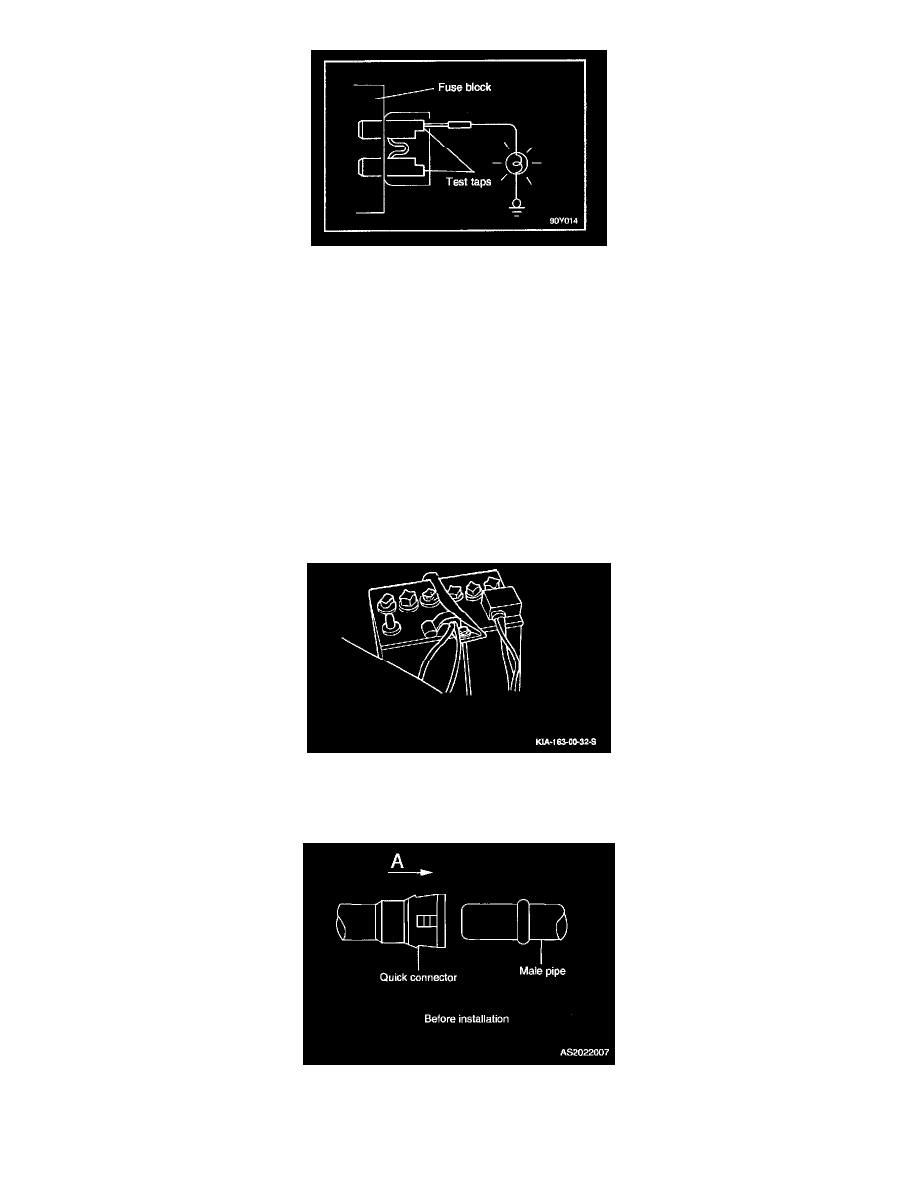Rio L4-1.5L (2001)

CHECKING FUSES
A blade type fuse has test taps provided to allow checking of the fuse itself without removing it from the fuse block. The fuse is okay if the test lamp
comes on when its one lead is connected to the test taps (one at a time) and the other lead is grounded. (Change the ignition switch position adequately so
that the fuse circuit becomes live.)
Service Points In Inspecting A Blown Fuse
Remove the fuse and measure the resistance between the load side of the fuse and ground. Set the switches of all circuits which are connected to this fuse
to a condition of continuity. If the resistance is almost 0 W at this time, there is a short somewhere between these switches and the load. If the resistance
is not 0 W, there is no short at the present time, but a momentary short has probably caused the fuse to blow.
The main causes of a short circuit are the following.
-
Harness clamped by the vehicle body
-
Damage to the outer casing of the harness due to wear or heat.
-
Water getting into the connector or circuitry
-
Human error (mistakenly shorting a circuit, etc.).
Disconnection of Battery Cables
Before disconnecting connectors or replacing electrical parts, disconnect the negative (-) battery terminal.
Quick Connector
Installation
Position quick connector to male pipe (direction "A") and push quick connector until retainer lock in and a click is heard.
